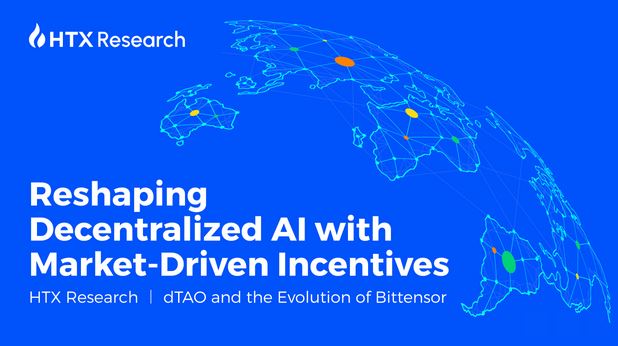HTX Research, research unit of HTX Group, has released a detailed report entitled “The Evolution of DTAO and Bittensor: Restructuring Decentralized AI with Market-Driven Incentives.” The evolution of artificial intelligence has shifted from developing basic models to improving and optimizing existing systems. This is a trend exemplified by industry leaders such as Deepseek and Openai. This analysis examines how Bittensor’s Dynamic Tao (DTAO) upgrade addresses the unique challenges within distributed AI and places networks as a pioneering force in this emerging sector.
Bittensor architecture: the fundamentals of a distributed AI ecosystem
The architecture of the Bitenser is centered around three core components. Subtensor blockchain is an EVM compatible polka dot parachine. 64 specialist subnet. Governance-centric route subnet. The network employs dual key security systems, ColdKey-Hotkey, and the Subnet UID framework to promote safe and open participation of miners and validators. At the heart of its operating model is the Yuma Consensus (YC), a dynamic incentive mechanism that branches out from traditional static reward systems. YC evaluates the validator weight vectors derived from historic performance and interests, distributes Tao rewards every 12 seconds, establishing a self-regulated “stake->weight->reward” loop. This mechanism aligns contributions incentives while mitigating malicious activity through continuous adjustments.
DTAO Upgrade: Market-Driven Resource Allocation
The DTAO upgrade, implemented on February 13, 2025, introduces a liquidity pool of subnet tokens and fundamentally changes the economic framework of the bittenser. Important innovations include:
Subnet Token Liquidity Pool: DTAO tokens for each subnet are paired with TAO in an automated market maker pool, allowing price discovery driven by supply demand dynamics. Emissions Rebalance: 50% of the new subnet emissions are injected into the liquidity pool, encouraging long-term participation. VALIDATOR-AS-VC Dynamics: Validators currently act as venture capitalists, strategically immers Tao in a high potential subnet to maximize returns.
This upgrade addresses previous systematic limitations, such as validator centralization, resource redundancy, and incentives for mismatches. By linking subnet rewards to market performance, DTAO promotes competition and accelerates the development of specialized AI solutions, ranging from multimodal content detection to distributed search engines.
Ecosystem Impact: Emerging High Performance Subnets
With the implementation of DTAO, high-performance subnets will emerge, operating within a self-enhancing feedback loop, and rising token prices will increase Tao emissions and then attract more users and valters. An example is:
Shoot: The subnet tokens in the CLI toolkit for deploying distributed apps, tuto, have surged rapidly due to the integration with Bittensor’s multinet (subnet 4) subnets 19 and 56.
However, projects like Kaito highlight potential pitfalls and demonstrate that technical proficiency alone does not guarantee success without robust integration with core product utilities.
Despite the advancements introduced by DTAO, HTX Research also identifies ongoing challenges, such as the lack of real-world demand drivers for TAO rewards, the possibility of resource redundancy between overlapping subnets, and persistent validator centralization. To ensure sustainable growth, HTX Research highlights the need for on-chain verifiability, a standardized subnet performance benchmark system, and integration of subnet token utilities such as governance and service access, reducing speculative transactions.
Bittensor’s DTAO upgrades mean a shift from centralized governance to market-driven incentives. The challenges remain, but network architectures and economic models provide a solid foundation for decentralized AI innovation. As subnet tokens evolve into tools with tangible utilities, Bittensor is located to redefine the co-dynamics within the AI ecosystem.
HTX research continues to work on providing comprehensive analysis of these developments, providing practical insights into the intersection of AI and blockchain technology.
For the full report, see https://square.htx.com/htx-research-analysis-bittensors-dtao- upgrade-redefines-decentralized-ai-infrastructure/.



